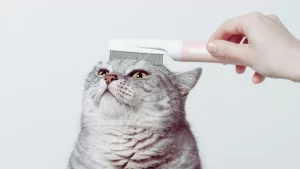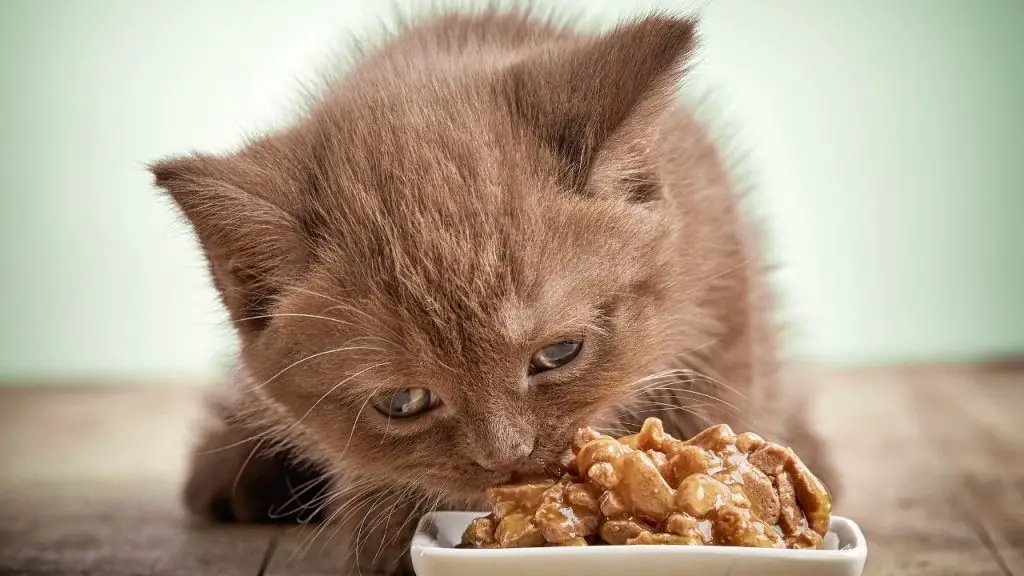Do you love your pet cat and want to give them the healthiest diet? You deserve to give your furball a diet that makes them strong, happy, and healthy. Uncover the best foods to keep your kitty in top condition!
Creating a diet plan for your indoor cat requires careful consideration. Age, lifestyle, health status, and individual dietary preferences should be considered.
When selecting food, look at the type of ingredient it contains. Is it cooked properly? Does it contain vitamins and minerals? Does it include taurine, an essential amino acid for cats? Also, consider the calorie content to meet your cat’s daily needs. Ask your vet for advice if you’re unsure.
Fresh or home-cooked food is often better than processed meals or low-quality kibble. These can lack micronutrients and proper nutrition. When selecting dry food for your cat, make sure it contains whole proteins (fish or poultry) and has reduced carbohydrates (no more than 20% per meal). Unsaturated fats such as plant oils are recommended too, as they provide essential fatty acids which benefit skin and coat.
Nutritional Requirements of Indoor Cats
Cats need to be nourished right to stay healthy. Providing indoor cats with the right nutrients is possible. Protein, fat, and carbohydrates are the three primary macronutrients to be incorporated into a balanced diet.
- Animal-based proteins like fish, poultry, and beef, high-quality eggs, and organ meats like liver and kidney, are the best sources.
- Fat is important for healthy skin and fur, plus energy. Fish oil is beneficial. It contains Omega 3’s which are great for brain development and reducing inflammation.
- Carbohydrates should be 15-25% of the daily caloric intake. Grains and cooked potatoes are good sources.
- Vitamin A, C, D, E, B1, B2, B3, and B6, plus minerals such as iron, copper, and zinc also should be included.
Many pet foods are specially designed for indoor cats. Ask your vet about any specific needs before changing your cat’s diet.
Benefits of Eating Healthy Food
Providing your cat with healthy food is key for their well-being. Quality ingredients in meals are not just considered by cat owners to be a better way of nutrition but also provide other benefits. Eating healthy meals can aid with weight maintenance, boost energy and keep teeth and gums healthy. It can even improve a cat’s immune system, making them better able to defend against diseases.
Fresh ingredients, vitamins, and minerals are a must for proper absorption into the body. Proteins, carbs, fatty acids, and fibers should all be part of the formula. Take into account their age, activity level, and lifestyle – outdoor cats need higher calorie intake than indoor cats. Keeping cats at a healthy weight means they will get sick less often.
Crunchy food formulas help reduce plaque or tartar formation on teeth, plus they are easier to digest due to higher moisture content. Raw beef mince cubes can provide essential amino acids for strong muscles. Choose the right food for your indoor cat – it could make all the difference!
Types of Healthy Food for Indoor Cats
Many think indoor cats need special diets, but the same nutrition rules apply. Give your cat a complete, balanced diet. Consider types of food and meal frequency.
- Types of Food: Cats need nutrient-rich diets with proteins and carbs. Offer quality dry food plus lean meats, veg, and fruits. High-quality wet foods are available for indoor cats. Avoid human table scraps unless made for pets.
- Frequency: Keep indoor cats on a consistent meal schedule. Don’t let them graze or they’ll overeat. Offer meals once or twice a day. When introducing a new food, give small samples first. Monitor weight and encourage physical activity.
Tips for Feeding Healthy Food to Indoor Cats
Cats have unique nutritional needs. Indoor cats need fewer calories than outdoor cats due to their lack of physical activity. A healthy diet for an indoor cat should contain essential nutrients, and be low in fat, sodium, phosphorus, and calcium.
Buy high-quality cat food with recognizable ingredients like chicken, fish, or turkey. Wet food is usually better than dry food as it contains more protein and fewer carbs. Consider your cat’s feeding habits and age when selecting a type of food. Kittens need food that is high in energy for growth.
Consult your vet about dietary requirements. Monitor your cat’s weight every few weeks to ensure they remain at an ideal weight.
Potential Health Issues of Feeding Unhealthy Food
Giving your house kitty a nutritious diet is essential for their long and healthy life. Still, some pet owners are oblivious to the possible health risks of feeding their cats unhealthy grub. These can include obesity, diabetes, urinary tract disease, dental disease, and even kidney failure!
It’s critical for owners to be aware of malnutrition signs in their cats. These may include a poor coat, weight loss, diarrhea, and dull eyes. Furthermore, changing from one brand to another could cause vomiting and digestive issues.
To avoid such health problems, owners should research ingredients and avoid high-carb levels or low-quality proteins like chicken meals or turkey meals. Instead, go for top-notch ingredients like real tuna and salmon. These give a higher level of nutrition and complete protein sources for your indoor cat.
How to Transition to Healthier Food?
Switching to healthier food for your indoor cat isn’t always easy. Cats can get used to the taste and texture of their current food, and not want to try something new. To make the switch smoother, go gradually. Here are a few tips:
- Mix a small amount of the new food with the cat’s current diet, and slowly increase the ratio.
- Buy several healthy cat food brands, and mix them together for your cat to sample.
- Know what nutrients and ingredients are in each brand.
- Consider wet or canned varieties. Cats like these more due to taste and smell.
- Keep track of your cat’s weight. Some brands may be higher in calories so adjust portions.
Conclusion
So, what’s best for your house cat? It depends on their wants and needs. Look for foods with real meat, fruits, and veggies. Also, avoid artificial colors, flavors, and preservatives. Your vet can offer the most helpful advice when it comes to diet.Lastly, make sure there’s fresh water and plenty of playtimes! This’ll take care of your cat’s mind and body.







